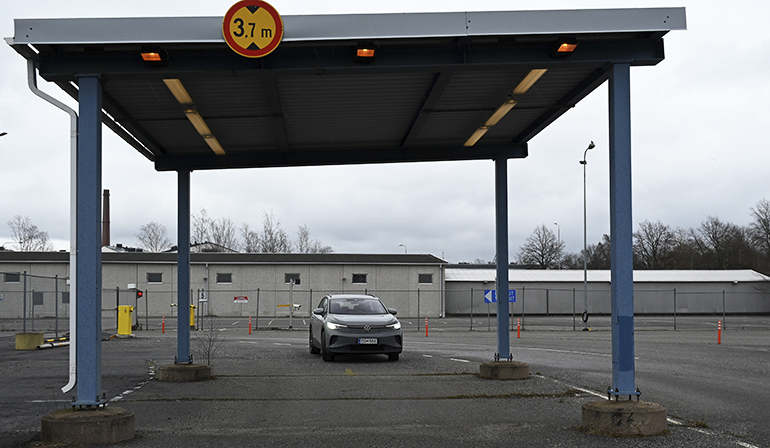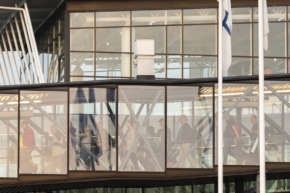Port of Turku tested new safety technologies
New technologies can improve the safety of passengers, and facilitate and speed up the work in ports, but do they function in practice? That was tested in the unique SecurePax project co-ordinated by the Port of Turku.

Technical Director Markku Alahäme starts his dark passenger car and drives out from under a shelter located in the port area in Turku. It looks like an ordinary building, but in late 2023 it housed two online cameras and eight 2.4 Ghz radio antennas.
They and new software were used to test whether new technology could find stowaways in a passenger car. In addition to Mr Alahäme, the test team comprised of a group of employees of the Port and Turku and shipping companies operating there who participated as volunteers. They drove under the shelter 156 times with a different number of people in the car and using different cars.
The equipment did not find stowaways in Mr Alahäme’s car, and they were not found in other cars, either.
”Instead, the system was able to count the people sitting in the front seat really well, while it was more challenging to spot those sitting in the back”, Mr Alahäme says.
The winter and poor weather hampered the operating of the equipment. When the car windows became steamy, the functionality of the system fell roughly to a half.
The test was part of the SecurePax project, partially financed by the EU, which included many other interesting aspects as well.
Those who embarked a ship were identified from photos
For the sake of safety of passenger traffic alone, shipping companies need to know who is on board a ship at any given time.
This was studied using software that took a photo of the faces of people when they embarked and disembarked a ship. The software then compared the photos. In the pilot, 200 ship cleaners who gave their consent to the test were photographed.
“The test was successful. The system identified the faces at 80% accuracy.”
The scanning of cars and face identification pilot were implemented without photographing passengers, because the GDPR does not allow photographing passenger without a permission.

Surprises in scanning
In 2023, in some departures on Viking Line’s ships on the Stockholm–Turku route the passengers were asked to place their bags on the conveyor belt of an x-ray inspection machine and pass through a security gate, a little like at international airports.
The SecurePax pilot was used to test whether the passengers were carrying any dangerous objects.
And they sure were. A total of 420 sharp objects, 261 flammable liquids, five firearms and ammunition, and one item of explosive substance were detected in the Stadsgården terminal in Stockholm. In the Turku terminal e.g. two firearms with ammunition, 159 sharp objects and 124 items of flammable substance or liquid were found.
A total of 100,567 passengers were examined in Stockholm and 23,773 in Turku.
“The equipment worked well, but the challenge with it is that it is slow. In ports it is essential to move a large number of passengers to the ship quickly, because liner services only stay in the port for a short time.”
Mr Alahäme is happy with the outcome the project and estimates that some of the tested technologies could be introduced in the new Ferry Terminal. Until further notice, the Port uses old, tried and tested means, such as drug detection dogs.
“No technology matches their sense of smell”, Mr Alahäme says and chuckles.
Text and photos: Sari Järvinen
SecurePax
- Budget EUR 1.5 million, 50% from the EU.
- Project implemented by Port of Turku (co-ordinator), Tallink Silja, Viking Line, CINEA.
- Other project participants: Ports of Stockholm, Finnish Police, Finnish Border Guard, Traficom, Finnish Customs, Finnish Security and Intelligence Service.
- The project also involved testing a 5G network, clarifying the areas of responsibility under the ISPS code, and determining how new technologies can be used in accordance with the law.
- Implementation period: 1 January 2019 – 31 December 2023 (the project was extended due to the Covid-19 pandemic).

